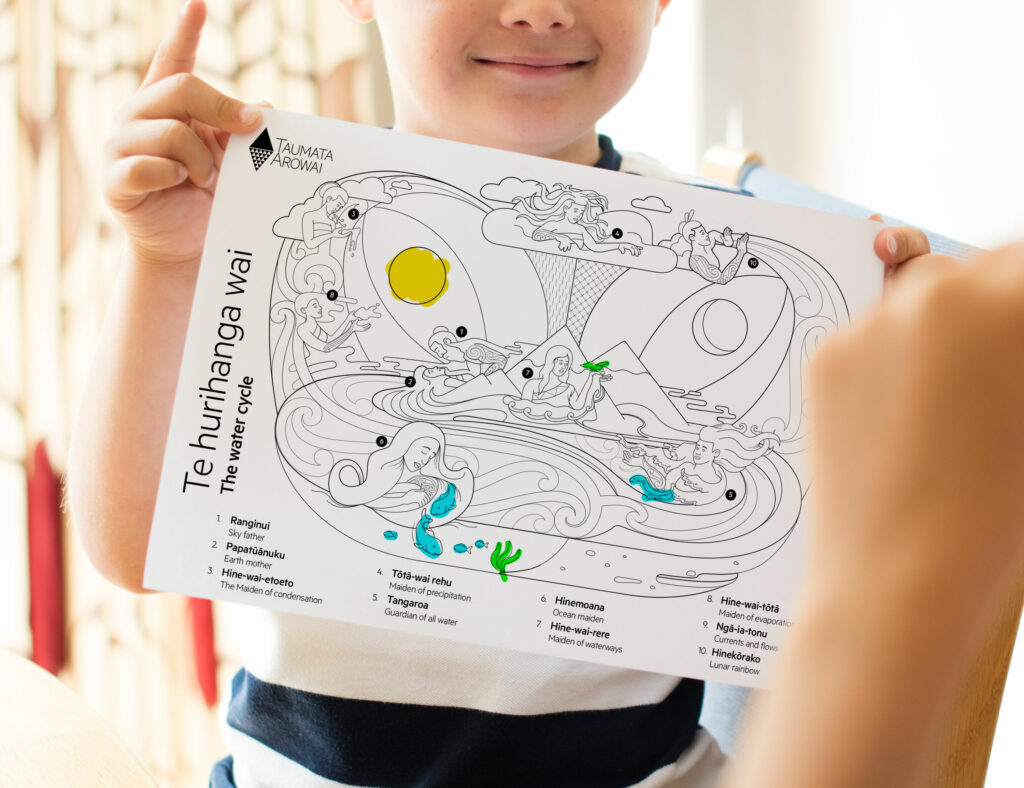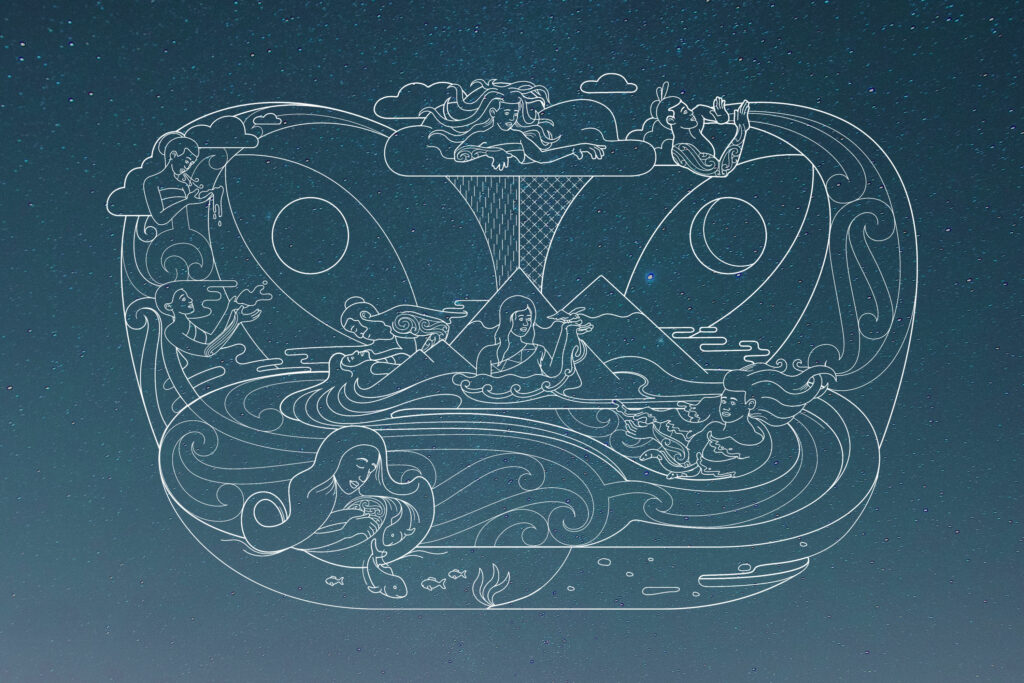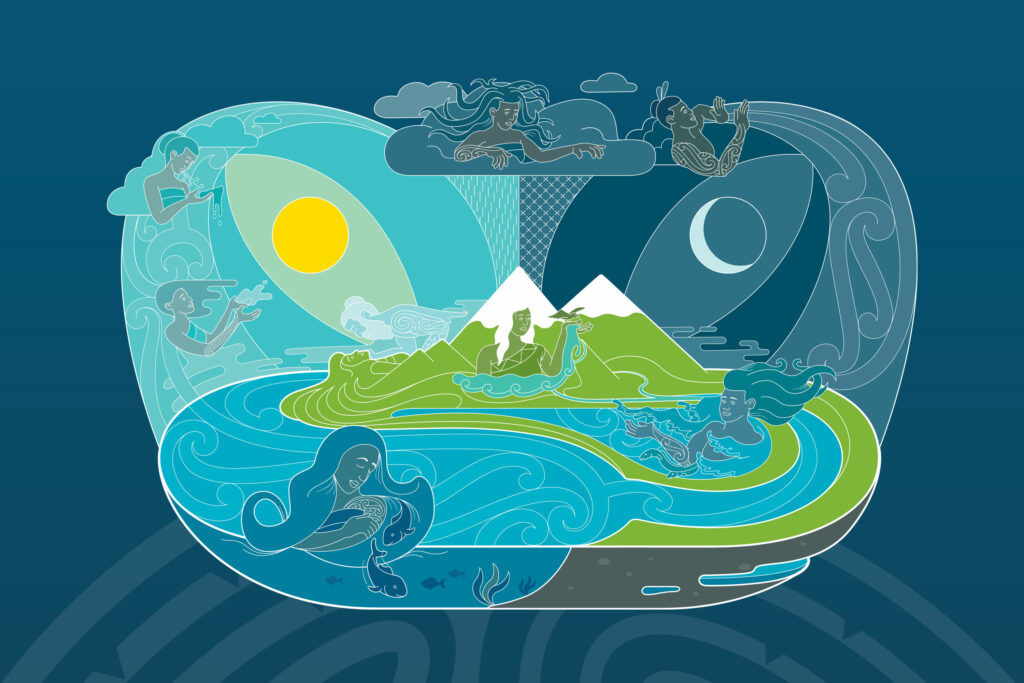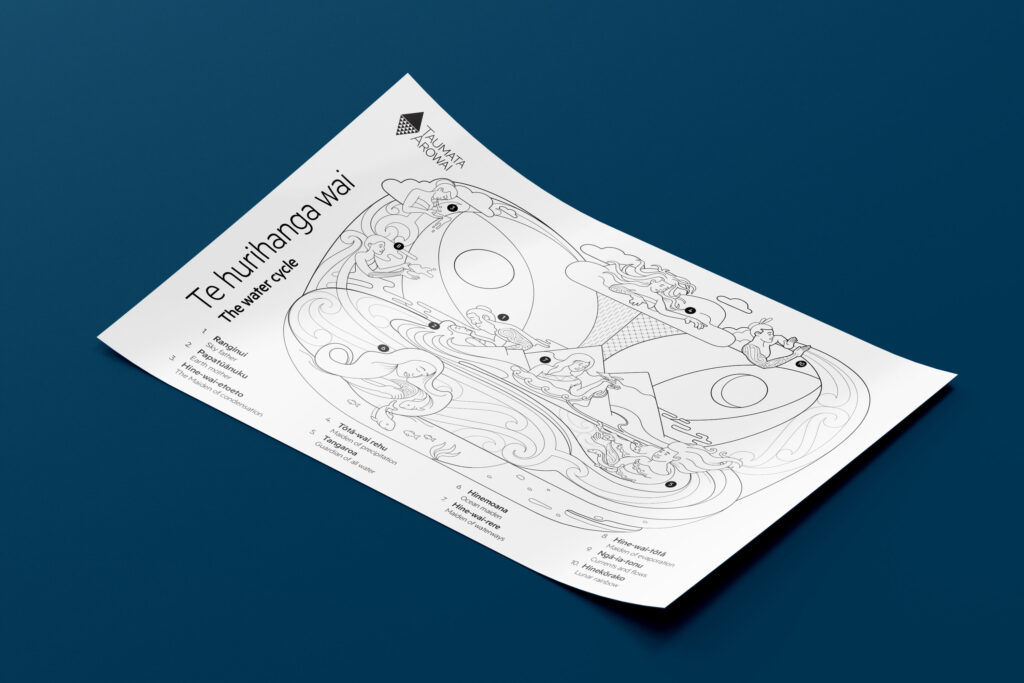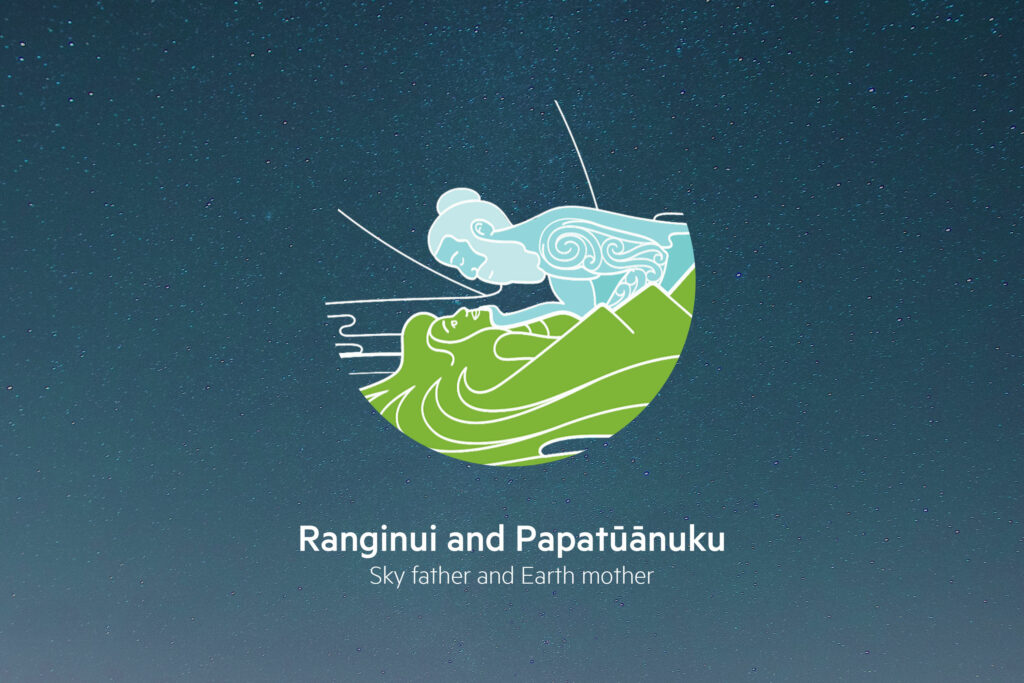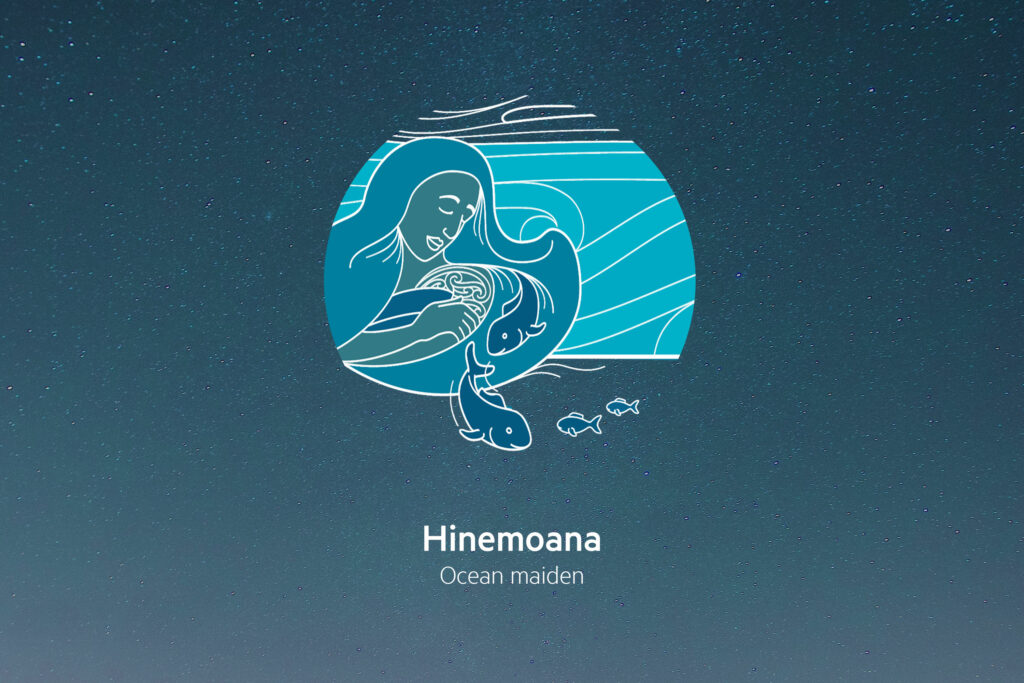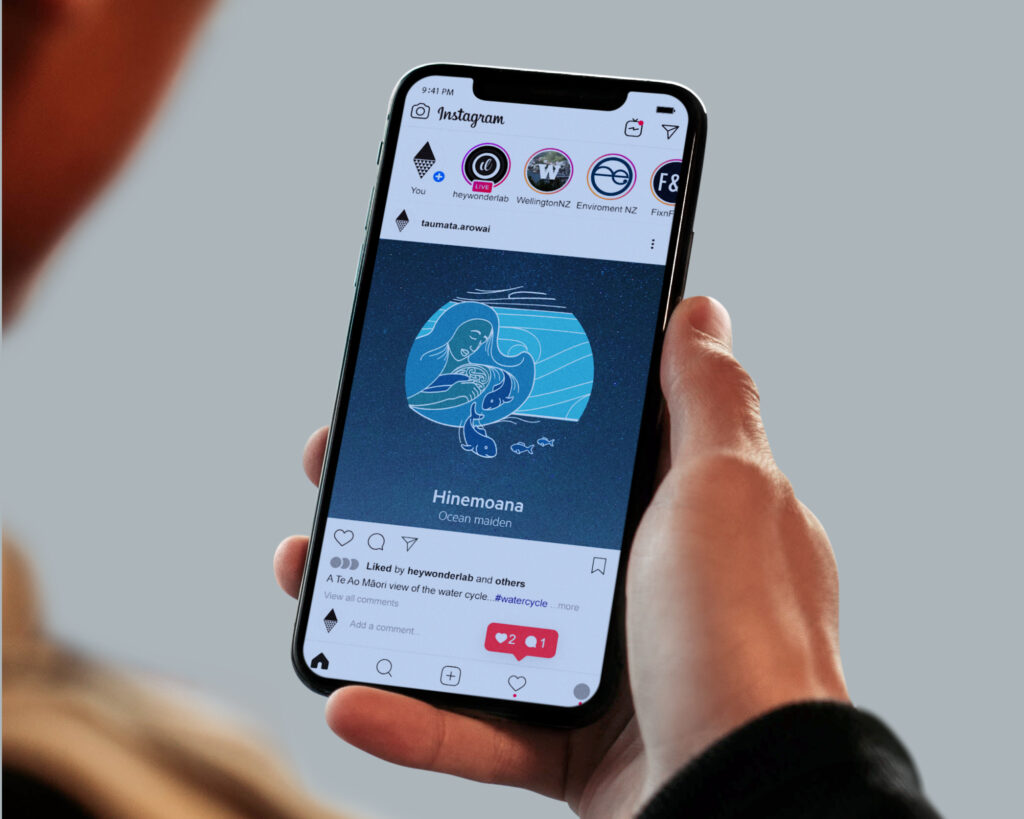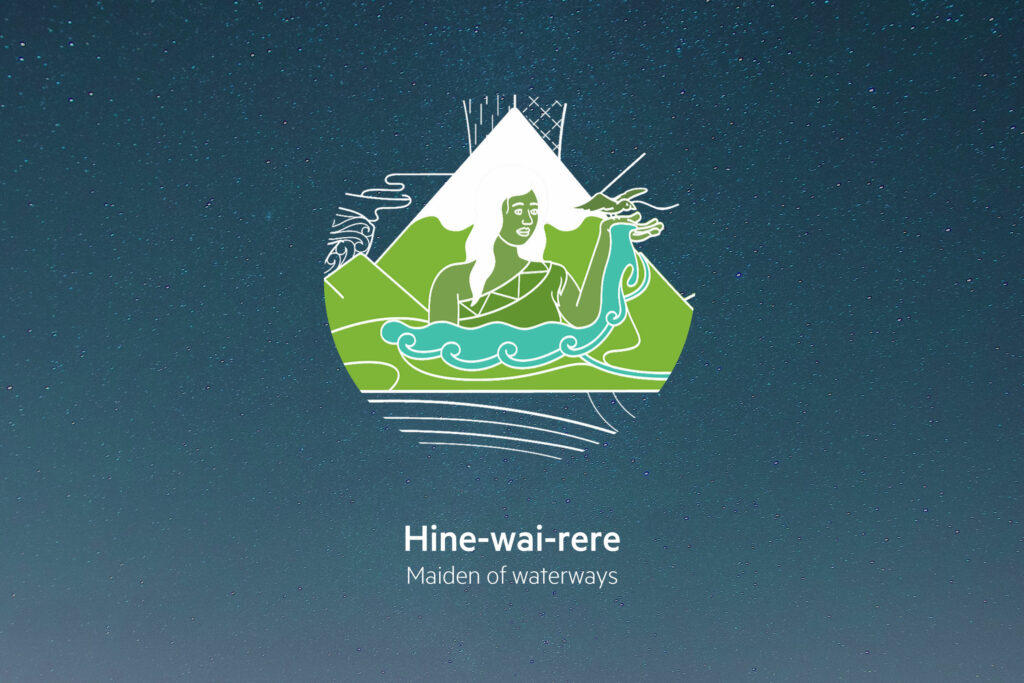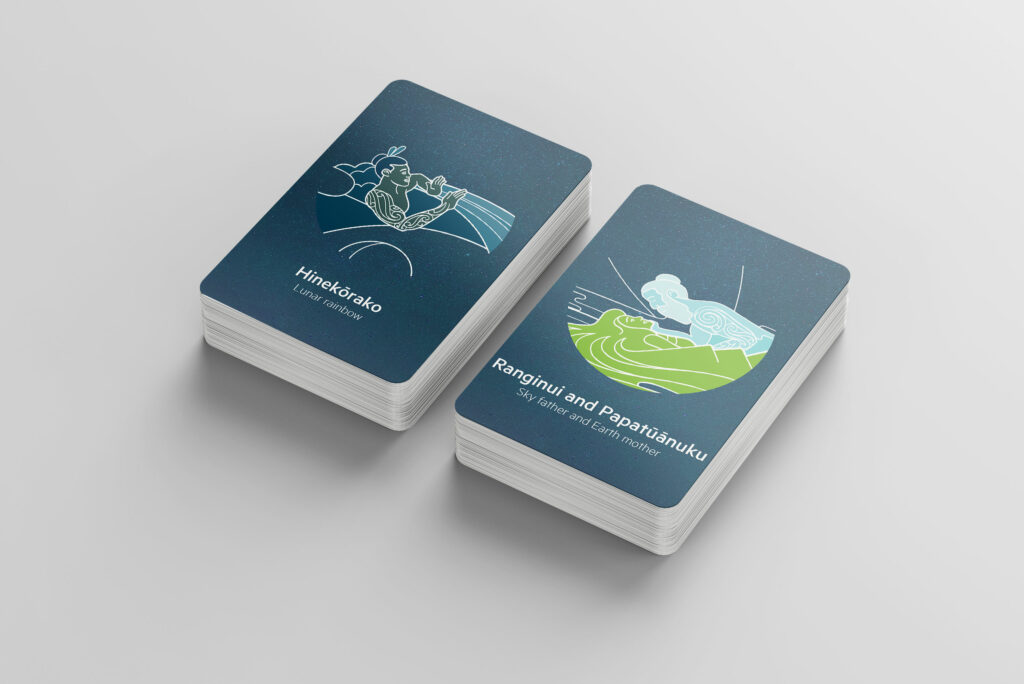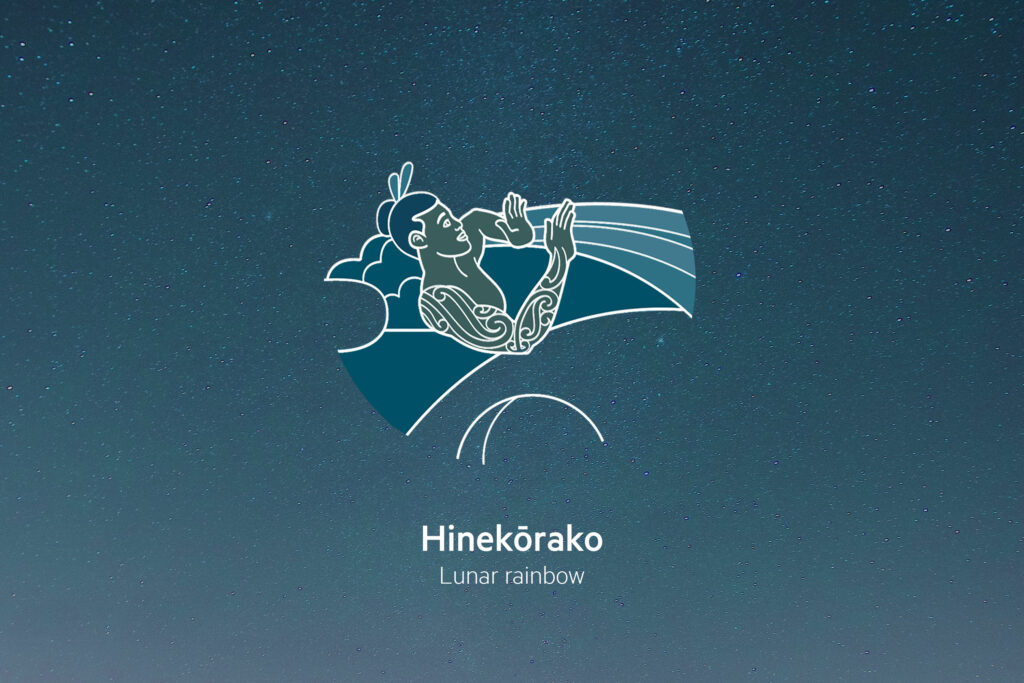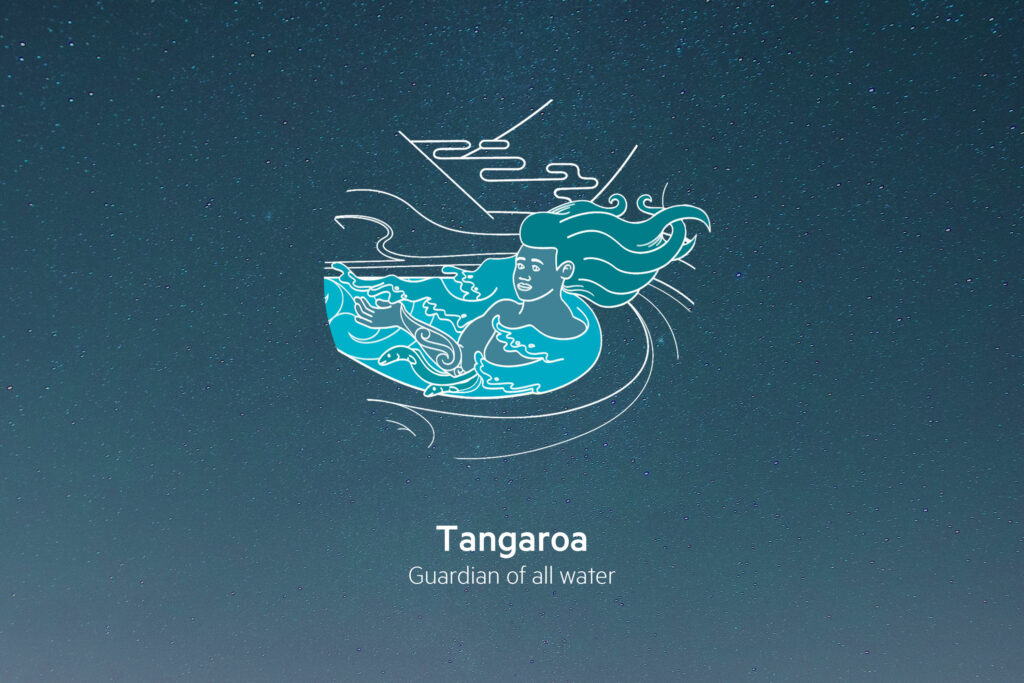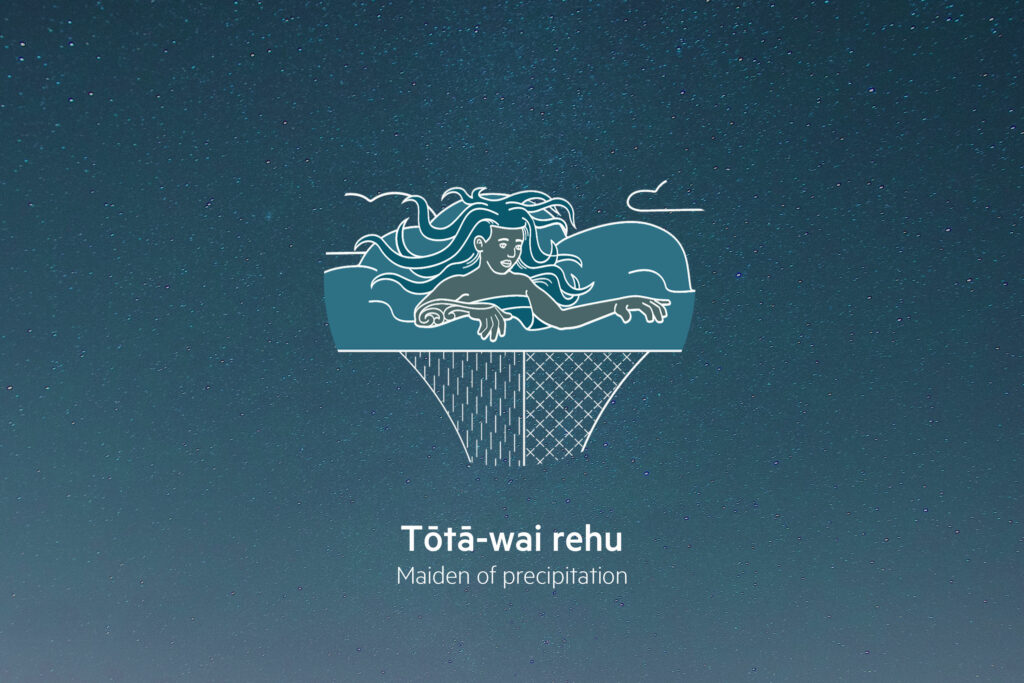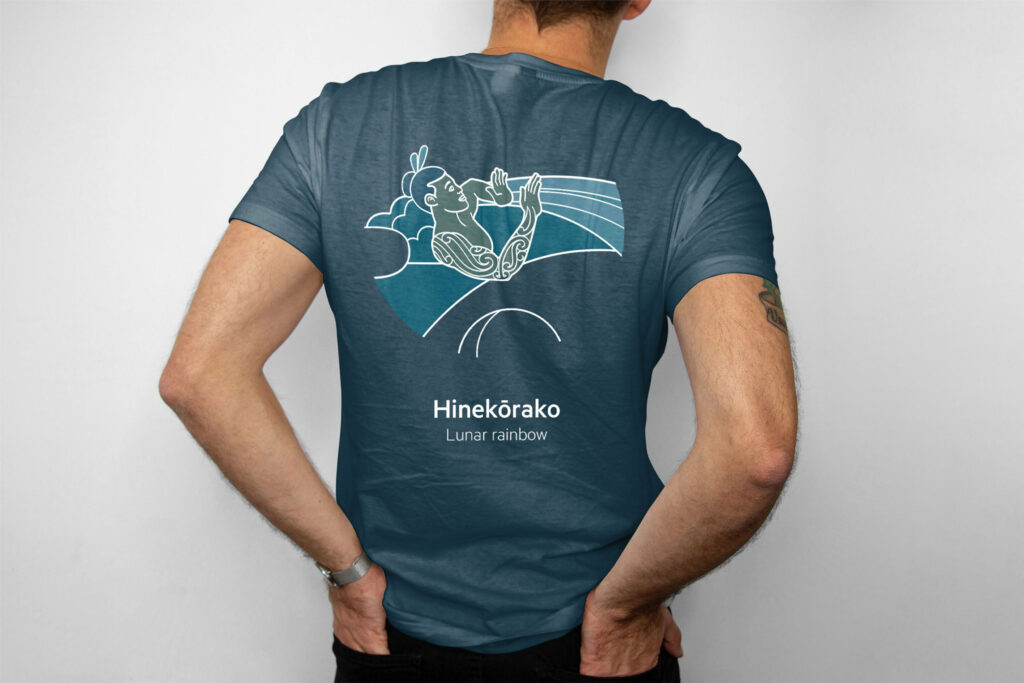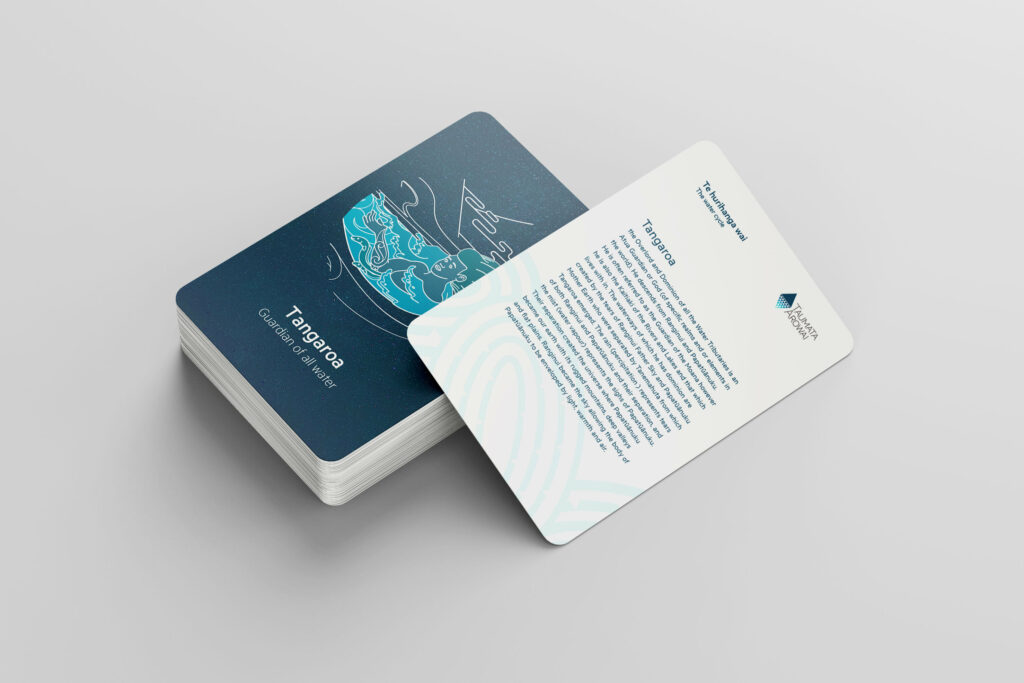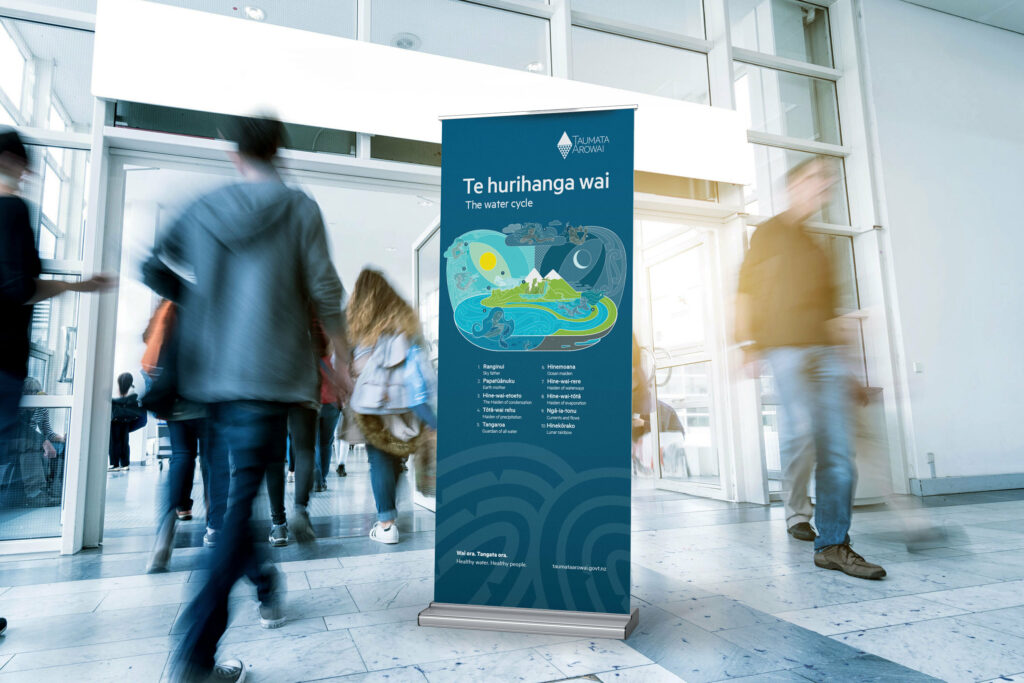Taumata Arowai
Client
Work
Brief
Taumata Arowai are New Zealander’s water protection agency. Their role sits in the kaupapa of protecting the health of te wai, and the health of te tangata, in balance: ko wai, ko au, ko tātou. Illustrating the water cycle through the Te Ao Māori lens, Wonderlab supported their story telling at various field days, events and online too. A close collaboration with the client, Māori illustrators and young Māori artist ensured an authentic result. Ka rawe!
The objectives
Collaborate for an authentic result, spanning the Pākāhā and Te Ao Māori worlds.
The goal
Using illustration to show the Te Ao Māori view the cycle of water. Personifying each state as water changes to condensation, precipitation, rain, rivers, lakes and oceans…
The process
We worked with two illustrators to collaborate closely between the Pākēhā and Māori world. A unique piece of work that represents both.
The deliverables
The water cycle illustration was featured on diverse materials, including pull-up banners and colouring sheets. It also made appearances on social media posts among other platforms. All gods and maidens were labelled in both Te Reo and English for clarity.
Outcome
Visual story telling through inter cultural collaboration.
The Wonderlab Long Read on the Influence of Te Reo and Māori Culture on New Zealand Design; Shaping Branding and Communications
As Kiwis increasingly embrace their indigenous roots, the integration of te Reo and Māori cultural elements in branding and communications has become a significant trend. How are these influences reshaping New Zealand’s design landscape, enhancing brand authenticity, and fostering deeper connections with audiences?
The Changing Demographics of Aotearoa
The latest census data reveals that Māori now constitute nearly 20% of New Zealand’s population, with a significant portion of this demographic being under 25 years old. As this youthful population grows, the potential for Māori influence on society—especially in areas like design and branding—will be substantial. Brands that acknowledge and incorporate the perspectives of this vibrant demographic will not only align with the cultural landscape but also create deeper emotional connections.
Te Reo Māori: More Than Just a Language
Te Reo Māori is far more than just a language; it’s a vessel of Māori culture and identity, reflecting the beliefs, stories, a way of thinking, and history of the Māori people. The revival of te Reo has gained critical momentum, with more New Zealanders recognising its importance not only as a means of communication but also as a way to honour and respect Māori heritage. Educational institutions in New Zealand are increasingly incorporating te Reo into their curricula. As the population ages, these students who were taught the language as an integral part of their learning will begin joining the workforce. This linguistic revival will play a crucial role in shaping branding and communication strategies across the nation. This shift will help cultivate a new generation of designers who are sensitive to cultural contexts and adept at creating inclusive branding.
The Rise of Cultural Sensitivity in Design: Acknowledging Cultural Heritage
In recent years, brands in New Zealand have increasingly acknowledged the need for cultural sensitivity in their design processes. Brands are increasingly looking to Māori artists and designers for inspiration. Māori design provides a treasure trove of intricate patterns, symbols, and storytelling elements. By collaborating with Māori creatives, companies can ensure that the integration of Māori design elements is authentic and respectful. This approach not only supports Māori artists but also enriches the brand’s narrative.
Brands that incorporate te Reo and Māori design elements often find themselves resonating more deeply with consumers, fostering a sense of belonging, inclusivity, and pride. This emotional resonance can lead to increased brand loyalty.
Indeed many businesses are finding commercial success by actively promoting the Reo. Maimoa Creative (link?) are a great example. (And our clients got to see their work with our 2024 Xmas gift.)
Navigating Cultural Appropriation and the Importance of Genuine Engagement
While the integration of Māori culture in branding can be powerful, it is essential to navigate this landscape carefully to avoid cultural appropriation. Brands must move beyond tokenism. Brands must engage with Māori communities, seek permission where necessary, and ensure that their representations are respectful and accurate. Genuine engagement with Māori communities is crucial, involving collaboration with cultural advisors and incorporating Māori perspectives at the start of the decision-making process. Brands that demonstrate a commitment to authentic engagement are more likely to earn the respect and loyalty of their audience. It can’t be just a tick of approval at the very end.
The Future of Design in New Zealand: Embracing Diversity and Inclusion
As New Zealand continues to evolve, the prevalence of Māori culture in design will likely grow stronger. This trend aligns with a broader movement toward diversity and inclusion in branding, where companies recognise the value of representing multiple perspectives. In the future, brands that do not engage with this evolution will look as socially antiquated as the sexist brands from the sixties do to us now.
Political Changes and their Impact
The recent change in government in 2023 has introduced a new political landscape that may influence the pace of change regarding Māori rights and cultural representation. While there is hope that the new administration will prioritise inclusivity and respect for indigenous culture, concerns exist that progress might slow if policies shift focus away from Māori engagement. This uncertainty could affect how brands approach their commitment to incorporating te Reo Māori and Māori cultural elements in their messaging and design.
As New Zealand navigates its cultural and political future, the relationship between branding and Māori identity will remain critical. Companies that adapt to the evolving landscape—prioritising genuine partnerships and cultural sensitivity—will not only enhance their brand authenticity but also contribute to a more inclusive and representative society. The coming years will be pivotal in determining how quickly these changes manifest in the design and branding sectors, making ongoing engagement and adaptability essential for success. By recognising the growing influence of the Māori population, brands can better connect with their audiences and contribute positively to the cultural narrative of Aotearoa.
